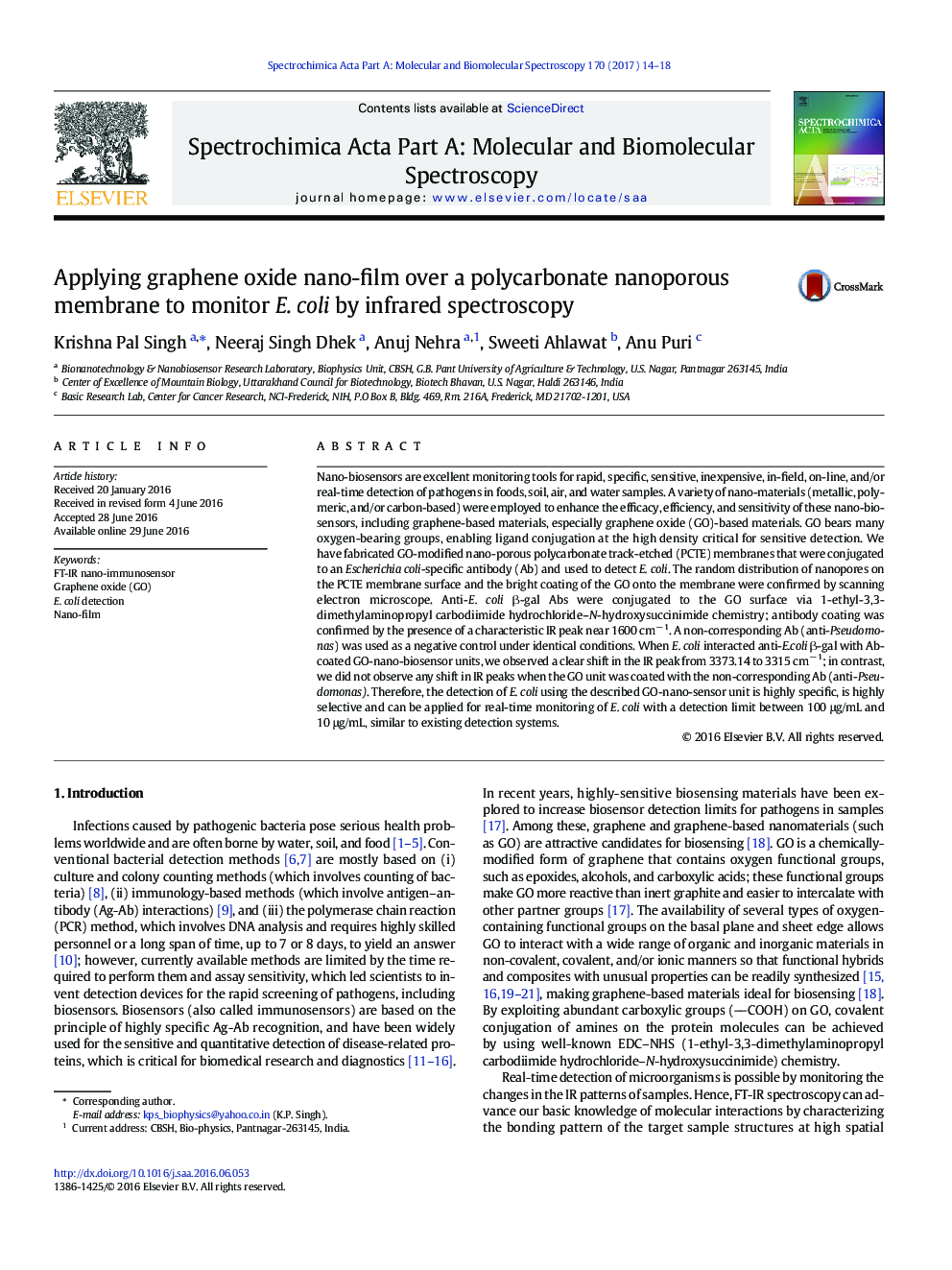| کد مقاله | کد نشریه | سال انتشار | مقاله انگلیسی | نسخه تمام متن |
|---|---|---|---|---|
| 1230793 | 1495199 | 2017 | 5 صفحه PDF | دانلود رایگان |
• The GO coated PCTE membrane was used as a novel platform for nanobiosensor.
• The device is selective, specific and sensitive for rapid monitoring of E. coli.
• The detection limit observed between 100 and 10 μg/mL with a sound cross reactivity
• The biofunctional GO nanofilm is probably first time used in FTIR based detection.
Nano-biosensors are excellent monitoring tools for rapid, specific, sensitive, inexpensive, in-field, on-line, and/or real-time detection of pathogens in foods, soil, air, and water samples. A variety of nano-materials (metallic, polymeric, and/or carbon-based) were employed to enhance the efficacy, efficiency, and sensitivity of these nano-biosensors, including graphene-based materials, especially graphene oxide (GO)-based materials. GO bears many oxygen-bearing groups, enabling ligand conjugation at the high density critical for sensitive detection. We have fabricated GO-modified nano-porous polycarbonate track-etched (PCTE) membranes that were conjugated to an Escherichia coli-specific antibody (Ab) and used to detect E. coli. The random distribution of nanopores on the PCTE membrane surface and the bright coating of the GO onto the membrane were confirmed by scanning electron microscope. Anti-E. coli β-gal Abs were conjugated to the GO surface via 1-ethyl-3,3-dimethylaminopropyl carbodiimide hydrochloride–N-hydroxysuccinimide chemistry; antibody coating was confirmed by the presence of a characteristic IR peak near 1600 cm− 1. A non-corresponding Ab (anti-Pseudomonas) was used as a negative control under identical conditions. When E. coli interacted anti-E.coli β-gal with Ab-coated GO-nano-biosensor units, we observed a clear shift in the IR peak from 3373.14 to 3315 cm− 1; in contrast, we did not observe any shift in IR peaks when the GO unit was coated with the non-corresponding Ab (anti-Pseudomonas). Therefore, the detection of E. coli using the described GO-nano-sensor unit is highly specific, is highly selective and can be applied for real-time monitoring of E. coli with a detection limit between 100 μg/mL and 10 μg/mL, similar to existing detection systems.
Figure optionsDownload as PowerPoint slide
Journal: Spectrochimica Acta Part A: Molecular and Biomolecular Spectroscopy - Volume 170, 5 January 2017, Pages 14–18
